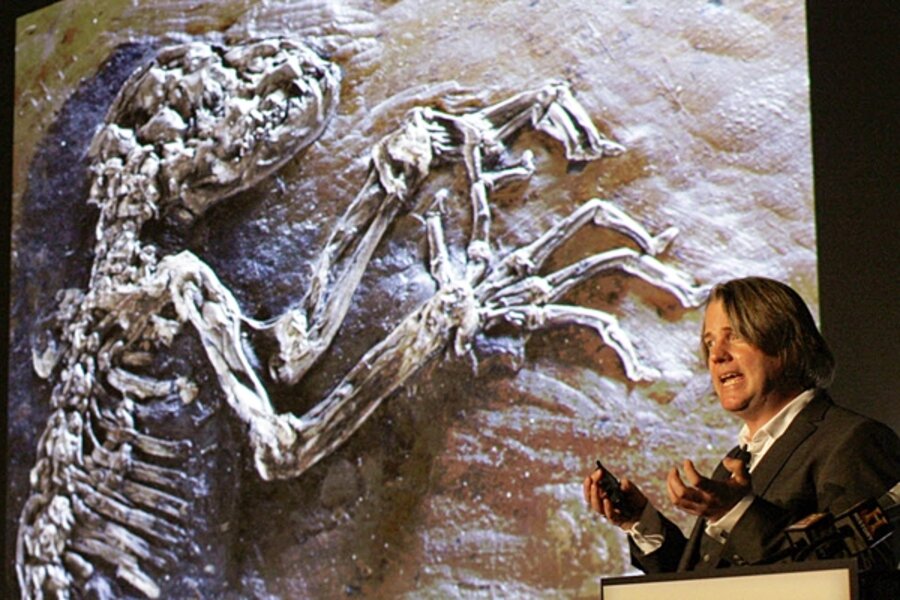Paleontologist as rock star: How one tiny fossil sparked a media circus
Loading...
Yesterday, media outlets across the globe pounced on the story of "Ida," a 47-million-year-old fossil discovered in Germany by paleontologist Jorn Hurum. According to Hurum, the fossil could be evidence of a missing-link species – one that connects higher primates with creatures such as lemurs.
A LiveScience report, published on the MSNBC website, heralded the groundbreaking nature of the discovery:
The fossil, called Darwinius masillae and said to be a female, provides the most complete understanding of the paleobiology of any primate so far discovered from the Eocene Epoch, Hurum said. An analysis of the fossil mammal is detailed Tuesday in the journal PLoS ONE. "This is the first link to all humans ... truly a fossil that links world heritage," Hurum said.
Scientist or reality television star?
But almost as dazzling as the find itself was the way in which it was unveiled. The announcement was made with great fanfare at the Museum of Natural History in New York, and coincided with a peer-reviewed article about the discovery. And like any good reality television star, Hurum was thinking "cross-platform": his team has a sleek website, an exclusive interview arrangement with ABC News, a book aimed at mainstream audiences, a deal with the History Channel, and a full-length movie about little "Ida."
As Tim Arango wrote in the New York Times, this was "science for the Mediacene age."
And the groundswell for the major-league media blitz had been building for weeks. The editors of Galleycat, a popular books blog, traced the whole thing back to the beginning of this month, when a "flurry" of activity on Twitter hinted of a "mysterious book known to booksellers (who received it in unmarked boxes with strict instructions not to open until today) only as "Project X":
[Book promotion expert] Bella Stander quickly determined that "Lucy Highfield" was code for "Lucy, found in a high field," a reference to the fossilized hominid discovered in 1974. A source at a national bookstore chain informed us that the actual author of the book might be Colin Tudge, a specialist in natural history and genetics, which further solidified that hypothesis concerning the book's contents.
Weird science!
Now that his secret is out, Jorn Hurum has faced some criticism from his fellow scientists, who have called the hype "bad news." Writing on his blog, biologist PZ Myers called the media circus "bad news, not because Ida is unimportant, but because it detracts from the larger body of the fossil record — I doubt that the media will be able to muster as much excitement from whatever new fossil gets published in Nature or Science next week, no matter how significant it may be."
No apologies
Hurum isn't exactly apologetic. At the press conference, he told the assembled reporters that any responsible "pop band is doing the same thing. Any athlete is doing the same thing. We have to start thinking the same way in science.”





